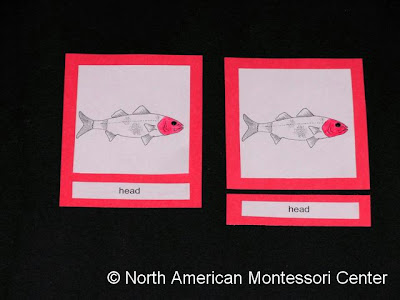
The new U.S. Common Core State Standards recommends developing vocabulary across the curriculum, not just in reading. For Montessorians, this should come as no surprise.
Developing Vocabulary for Success Across All Montessori Curriculum
Starting in the Montessori early childhood environment, children are given specific vocabulary building materials — nomenclature cards — to learn the precise names of items that they encounter in their environment, as well as the names of items found throughout the Montessori curriculum. It is during this sensitive period for language that the foundation for naming and comprehending takes root.
The importance of building a strong vocabulary must not be overlooked. In 1995, researchers Betty Hart and Todd Risely observed that the amount of language differs significantly between parents and infants. Some parents use as many as 3,000 words per hour with their infant, while others use less than 500 (Hart and Risely, 1995). Researchers discovered that “some children enter preschool at age 4 with oral vocabularies that are up to two years behind their peers. These children simply haven’t been exposed to many words” (Jobrack). Hart and Risely concluded that without direct vocabulary teaching, children can lag behind early in their education and never catch up to their peers.

The use of Montessori nomenclature cards is important for introducing and building vocabulary. However, there is more that can be done to help students actively engage with new vocabulary, assisting their internalization of the words’ meanings. It is said that children who have more encounters and practice with words do better than their peers who have less. In fact, it may take up to 12 instructional encounters to make a difference.
Robert Marzano and Debra Pickering have developed an approach that provides students with the opportunity to increase their instructional encounters with vocabulary. Their learning strategy to help students develop and internalize vocabulary begins with the teacher providing an example and description of the term — similar to Montessori’s three-period lesson.
- Present the term using a concrete example. If that is not possible, use a model or photograph to represent the word. During the presentation, provide the student with a description, explanation, or example of the term.
- After demonstrating mastery with the three-period lesson, ask students to describe, explain, or give an example using their own words.
- Have students draw a picture, diagram, or symbol to represent the word.
- Keep an academic vocabulary journal. This can be a separate section of the academic journals students keep for each subject.
- Involve students in their own vocabulary review by having them work cooperatively with other students.
- Create a whole body review of vocabulary by encouraging students to play games that allow them to interact with the terms. Pictionary or charades are just two examples.
Learning vocabulary is more than spelling tests and dictionary definitions. Building a solid foundation of academic vocabulary is important for student achievement throughout their academic career.
As much as possible, NAMC’s web blog reflects the Montessori curriculum as provided in its teacher training programs. We realize and respect that Montessori schools are unique and may vary their schedules and offerings in accordance with the needs of their individual communities. We hope that our readers will find our articles useful and inspiring as a contribution to the global Montessori community.
© North American Montessori Center - originally posted in its entirety at Montessori Teacher Training on Friday, April 5, 2013.
© North American Montessori Center - originally posted in its entirety at Montessori Teacher Training on Friday, April 5, 2013.

0 comments:
Post a Comment
Have questions or comments? Let us know what you thought about this article!
We appreciate feedback and love to discuss with our readers further.